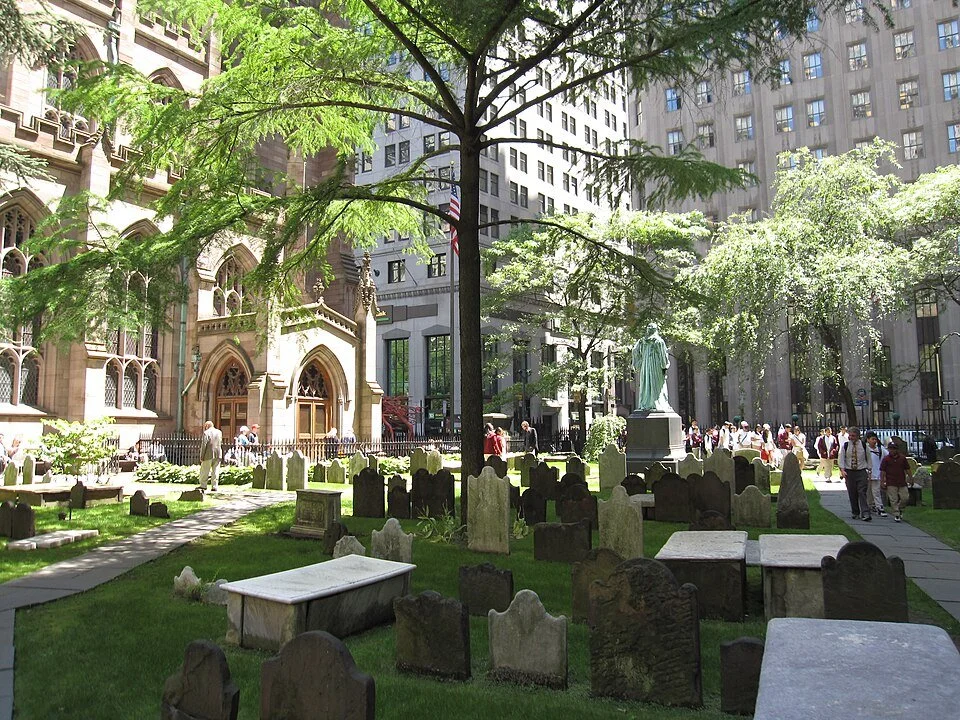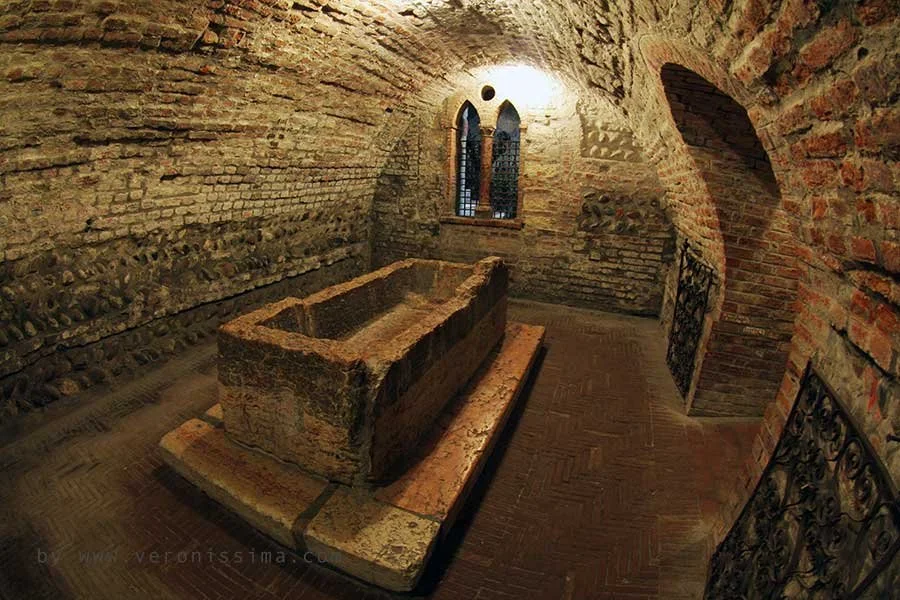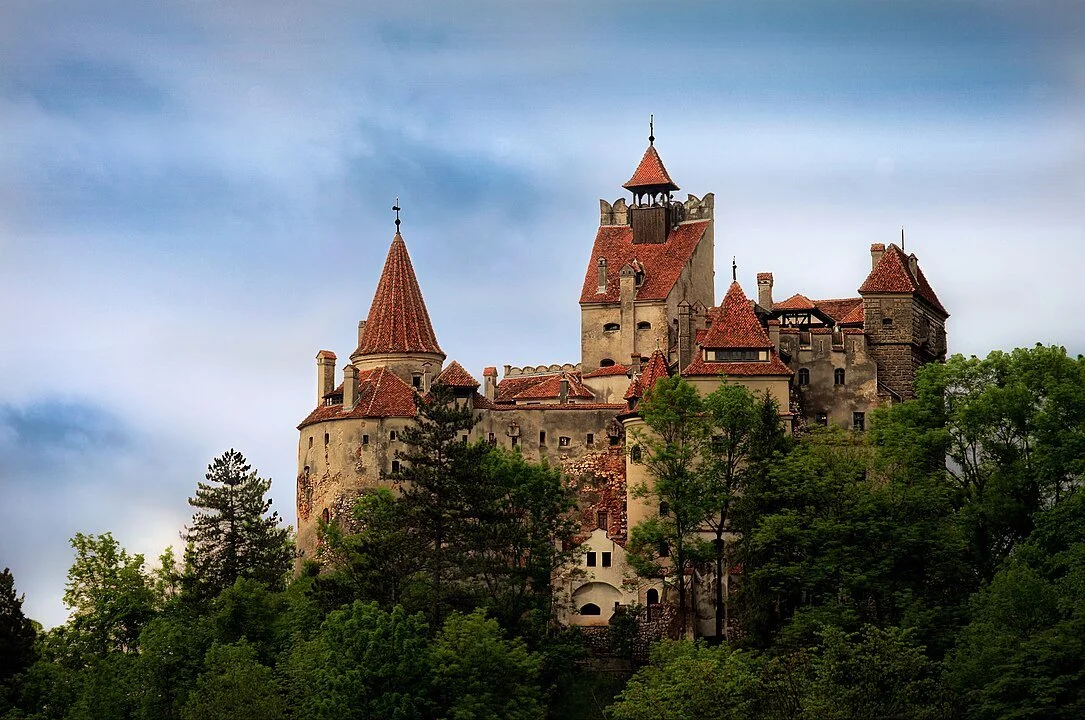8 Fictional characters with graves you can actually visit
It’s that time of year when the veil between the living and the dead grows thin. When legends warn that dressing up in glittering costumes might save you from being dragged into the underworld. And with that in mind, we often seek out spooky adventures—haunted houses, ghost tours, quiet graveyards. But why not take it a step further and visit a grave that doesn’t just honor the dead… but the fictional?
Yes, you read that right. Scattered around the world are gravestones, memorials, and monuments for characters who never lived at all. It’s the perfect overlap in the nerdy Venn diagram: literature, folklore, pop culture, and travel.
This list was inspired by an episode of the Atlas Obscura podcast—one of my favorite resources when I start researching a new trip. We literally don’t plan any trips without it. When I found out they had a podcast, I was instantly intrigued (see my post about XX travel podcasts you should be listening to for more recommendations).
The episode, Here Lies Charlotte Temple, the Woman Who Never Existed, is a fascinating listen. Host Dylan Thuras is joined by writer Allegra Rosenberg to explore the strange case of a gravestone in New York’s Trinity Churchyard that belongs to a character from an 18th-century novel. And it got me wondering: if Charlotte Temple has a grave, surely there must be others like her?
The answer is ‘oh my, yes’. So, in the spirit of spooky season, here are my top seven fictional character memorials worth adding to your travel list—starting with the one that inspired it all.
Trinity Church Cemetery photo courtesy Gryffindor - CC BY-SA 3.0
1. Charlotte Temple
Heroine of Charlotte Temple (1791) by Susanna Rowson, a tragic tale of a young English schoolgirl seduced, abandoned, and dead in New York. Hugely popular in early American literature. The slab marked “Charlotte Temple” appeared around the 1840s, allegedly carved by a stonecutter capitalizing on the novel’s popularity. Though no body lies beneath, it became a curiosity for tourists and fans. Trinity archivists confirmed in 2008 that the grave is empty.
📍 Trinity Churchyard, Broadway at Wall Street, New York City, USA. The slab is on the north side of Trinity Church, against the Broadway fence line. Approximate coordinates: 40.7080° N, 74.0122° W
Sources: Atlas Obscura, Trinity Church NYC Wikipedia
Juliet’s Grave photo courtesy Veronissma
2. and 3. Romeo & Juliet
Do we need to tell you about Shakespeare’s doomed lovers, the archetypes of youthful passion and tragedy? No? Cool. Well did you know that in Verona is a red marble sarcophagus linked to Juliet as early as the 16th century, even before Shakespeare’s version became famous? By the 19th century, it had become a full-fledged tourist shrine. Charles Dickens visited and pilgrims chipped pieces of the marble. Today, the site draws thousands of visitors annually, treated as the real resting place of the fictional couple. Though less prominent than Juliet’s tomb, Romeo is also memorialised alongside her. Nice to see the women getting the top billing in this one.
📍 Juliet’s Tomb, Convento di San Francesco al Corso, Via Luigi da Porto 5, Verona, Italy. Housed in a crypt beneath the former convent, now a museum. Location coordinates: 45.4366° N, 10.9995° E
Sources: Italy4.me, The Literary Tourist Veronissam
4. Sherlock Holmes
The world’s most famous detective, created by Sir Arthur Conan Doyle in 1887. After Doyle “killed” Holmes at the Falls in The Final Problem (1893), fans treated the spot as sacred. In 1988, the Sherlock Holmes Society of London erected a plaque near the falls, and visitors often leave flowers — effectively turning it into a symbolic grave.
📍 Plaque near the Reichenbach Falls, Meiringen, Switzerland. The plaque is located along the path near the falls where Holmes “died” in The Final Problem. Location coordinates: 46.7255° N, 8.1890° E
Sources: WorldCrunch
5. Don Juan Tenorio
The archetypal Spanish libertine who devotes his life to seducing women, originated in Spanish literature (El burlador de Sevilla, c. 1630), later immortalized in opera (Don Giovanni) and poetry (Byron’s Don Juan). Seville embraced Don Juan as part of its identity, with cenotaphs and symbolic sites linked to him, especially during All Souls’ Day traditions. The “grave” is more cultural and ceremonial than literal, blurring story with local folklore.
📍 Cementerio de San Fernando, Calle San Jerónimo, Seville, Spain. A cenotaph and plaques link the legendary character to Seville. Location coordinates: 37.4031° N, 5.9758° W
Sources: Visit Seville, Wikipedia
Bran Castle photo courtesy Dobre Cezar CC BY-SA 3.0
6. and 7. Dracula
Bram Stoker’s Count Dracula (1897), the most famous vampire in literature, loosely inspired by the historical Vlad III “the Impaler.” These two sites blur myth, history, and fiction, drawing vampire enthusiasts worldwide.
Tourist guides in Romania often point to “Dracula’s grave” at Snagov Monastery, though no evidence links either Vlad or the fictional count to it. At one point, the Romanian government planned to cash in on the popularity of this location by building a Dracula themed amusement park in the area, but that idea was shelved in 2006.
📍Snagov Monastery: Lake Snagov, north of Bucharest, Romania — said to hold “Dracula’s grave.” Coordinates: 44.6989° N, 26.1883° E
Bran Castle markets itself as “Dracula’s Castle.” Erected after 1211 by knights of the Teutonic Order and perched high atop a 200-foot-high cliff, Bran Castle owes its fame to its imposing towers and turrets and the visual similarity to the castle in Stoker’s creation. The castle has changed hands over the years, but now is a museum and tourist attraction.
📍Bran Castle: Strada General Traian Moșoiu 24, Bran 507025, Romania — promoted as “Dracula’s Castle.” Location coordinates: 45.5155° N, 25.3670° E
Source: Romanian Tourism Wikipedia
8. Paul Bunyan
The giant lumberjack of American folklore, popularised in late 19th and early 20th century tall tales. Paul Bunyan symbolises frontier strength, humor, and the logging industry, often accompanied by his giant ox, Babe. In the 1930s, Kelliher created a humorous “grave” for Paul Bunyan as part of its Paul Bunyan Days festival, turning a tall-tale hero into a mock historical figure. The grave marker remains a roadside attraction, visited by travelers who treat the folkloric giant as if he had truly lived and died.
📍 Kelliher, Minnesota, USA. Location coordinates: 47.9255° N, 94.4494° W
Source: Roadside America
So what do you think? Would you add these to your travel ‘must do’ plans? If you are interested in cemeteries, please have a look at our visit to London’s Highgate Cemetary here.







